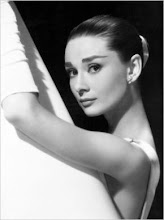With my bare eyes alone, I could tell some birds apart. I am not a total city-slicker. So I could tell the difference between a robin, a seagull, a Canada Goose, a duck, a swan, a hawk and a pigeon. But that was about it. Otherwise, most of the flying or perching or pecking things I saw were just birds. In fact, Tom and I have long had a little joking way of identifying birds. If either of us saw one, while we were walking or driving, we would simply report to the other, “One Bird”, and the other would look at it and repeat, “One Bird”. And we’d chuckle a bit.
But last week, I finally saw that there are some beautiful, significant differences between birds.
But last week, I finally saw that there are some beautiful, significant differences between birds.
To mention just a few, we saw ones with stunning, bright yellow breasts that we couldn’t quite identify. We saw hundreds of black ones with a thick white line on the wings, that we identified as Lark Buntings.  With the three of us shouting out identifying characteristics as we gazed through our respective binoculars, we all agreed that one with a spotted chest, a black shield at its neck, and a red spot on its face was a Northern Flicker. And we saw another – splendidly plump and elegantly colored in gray with black and white markings that had no exact match in the bird manual my friends brought.
With the three of us shouting out identifying characteristics as we gazed through our respective binoculars, we all agreed that one with a spotted chest, a black shield at its neck, and a red spot on its face was a Northern Flicker. And we saw another – splendidly plump and elegantly colored in gray with black and white markings that had no exact match in the bird manual my friends brought.
Indeed, few of the birds looked exactly like they did in the drawings in the bird book.
 With the three of us shouting out identifying characteristics as we gazed through our respective binoculars, we all agreed that one with a spotted chest, a black shield at its neck, and a red spot on its face was a Northern Flicker. And we saw another – splendidly plump and elegantly colored in gray with black and white markings that had no exact match in the bird manual my friends brought.
With the three of us shouting out identifying characteristics as we gazed through our respective binoculars, we all agreed that one with a spotted chest, a black shield at its neck, and a red spot on its face was a Northern Flicker. And we saw another – splendidly plump and elegantly colored in gray with black and white markings that had no exact match in the bird manual my friends brought.Indeed, few of the birds looked exactly like they did in the drawings in the bird book.
But when I thought about it, that seemed right to me. I mean, imagine a manual that identified a human – or perhaps a certain "race" of humans -- and the great variety of appearances, characteristics and traits of the multitude of humans who would actually fall into that category.
In any case, for me, it was not that important to identify the birds by species (just as I don't wish to label humans). What was important was that suddenly, the birds in my world did not appear simply as an indistinct collection of gray or brown or black “one birds”. Rather, they had identifying characteristics that made them distinct and lovely.
I have heard of people who keep life lists of the bird species they see. I have met one woman whose main goal in international travel is to see the birds of the world. I do not think I will ever be one of those.
And frankly, the grasshoppers were a big turn-off.
But I might enjoy going out once or twice a year, with binoculars in hand, to remind myself of the beauty and variety of the birds around me.
And already, while strolling around my neighborhood, I am seeing birds differently – noticing the color of their chests and beaks and distinguishing features like dark “masks” around their eyes or the shapes of their tails. And when I do, I am truly shocked to have failed to notice these features before.
So I guess that means that I am appreciating nature more already. Nature, as a whole, doesn’t yet thrill me. But I am able to see -- I am able to appreciate – more of what has been there all along.
In any case, for me, it was not that important to identify the birds by species (just as I don't wish to label humans). What was important was that suddenly, the birds in my world did not appear simply as an indistinct collection of gray or brown or black “one birds”. Rather, they had identifying characteristics that made them distinct and lovely.
I have heard of people who keep life lists of the bird species they see. I have met one woman whose main goal in international travel is to see the birds of the world. I do not think I will ever be one of those.
And frankly, the grasshoppers were a big turn-off.
But I might enjoy going out once or twice a year, with binoculars in hand, to remind myself of the beauty and variety of the birds around me.
And already, while strolling around my neighborhood, I am seeing birds differently – noticing the color of their chests and beaks and distinguishing features like dark “masks” around their eyes or the shapes of their tails. And when I do, I am truly shocked to have failed to notice these features before.
So I guess that means that I am appreciating nature more already. Nature, as a whole, doesn’t yet thrill me. But I am able to see -- I am able to appreciate – more of what has been there all along.











1 comment:
Birds are easy to identify.
The brown one seen at thanksgiving is roast turkey,
The brown one seen friday night is roast chicken
The red one hanging in the window of the chinese grocery is BBQ duck.
What more is there to bird watching?
Post a Comment